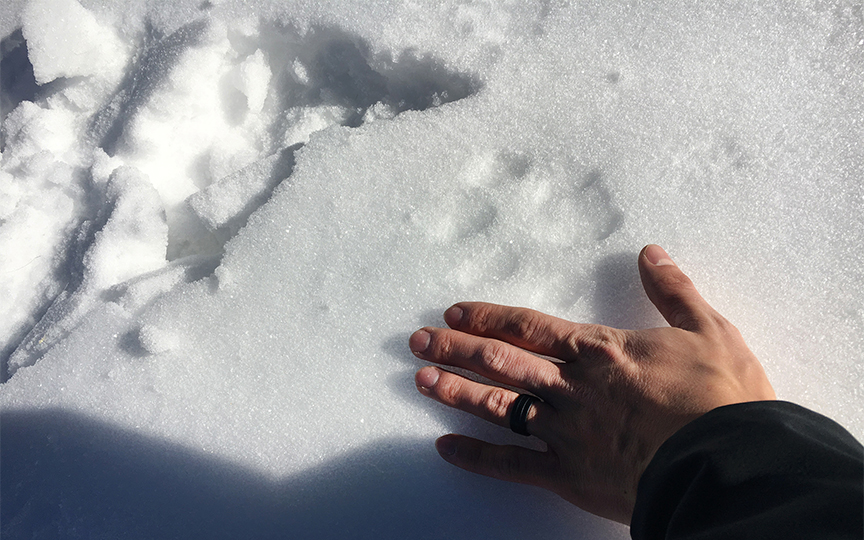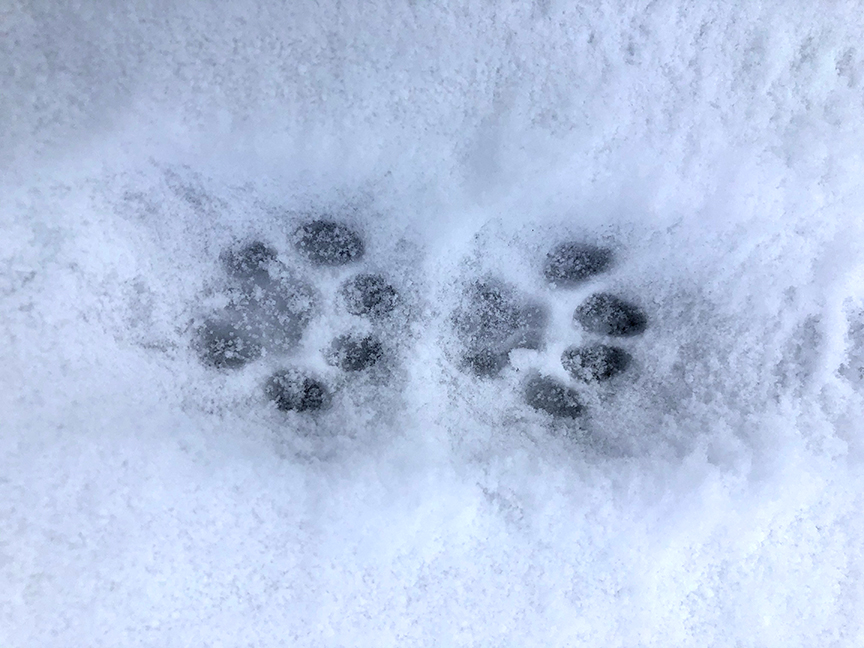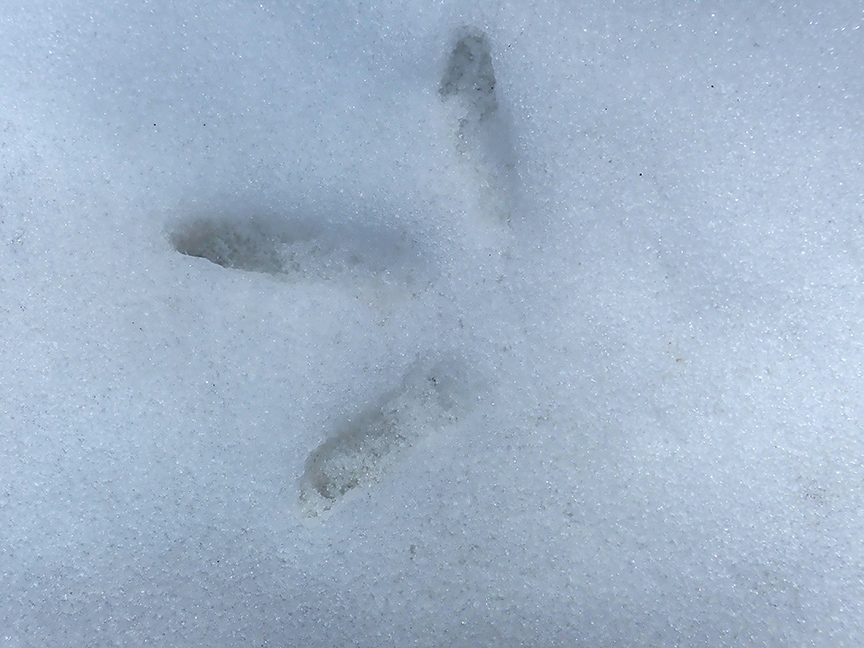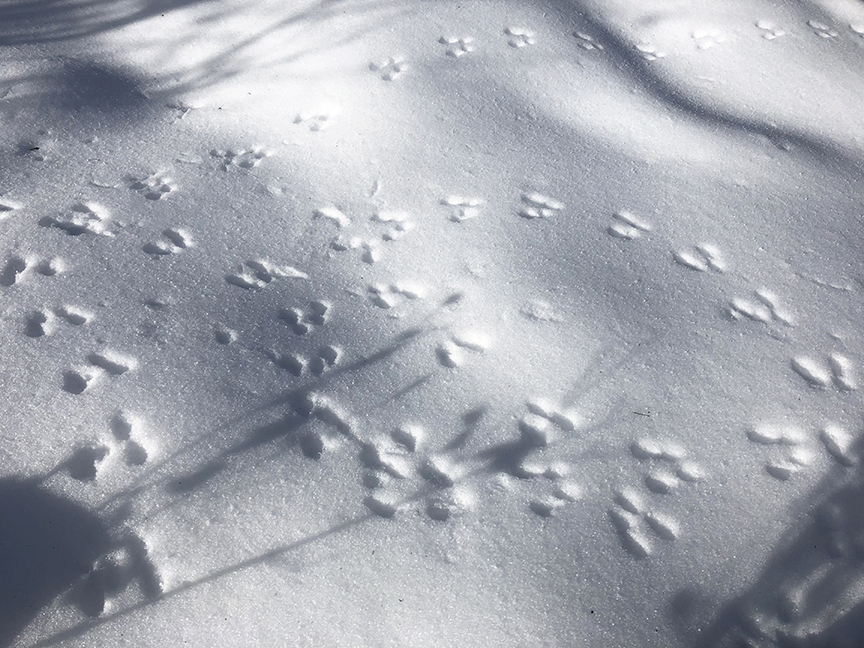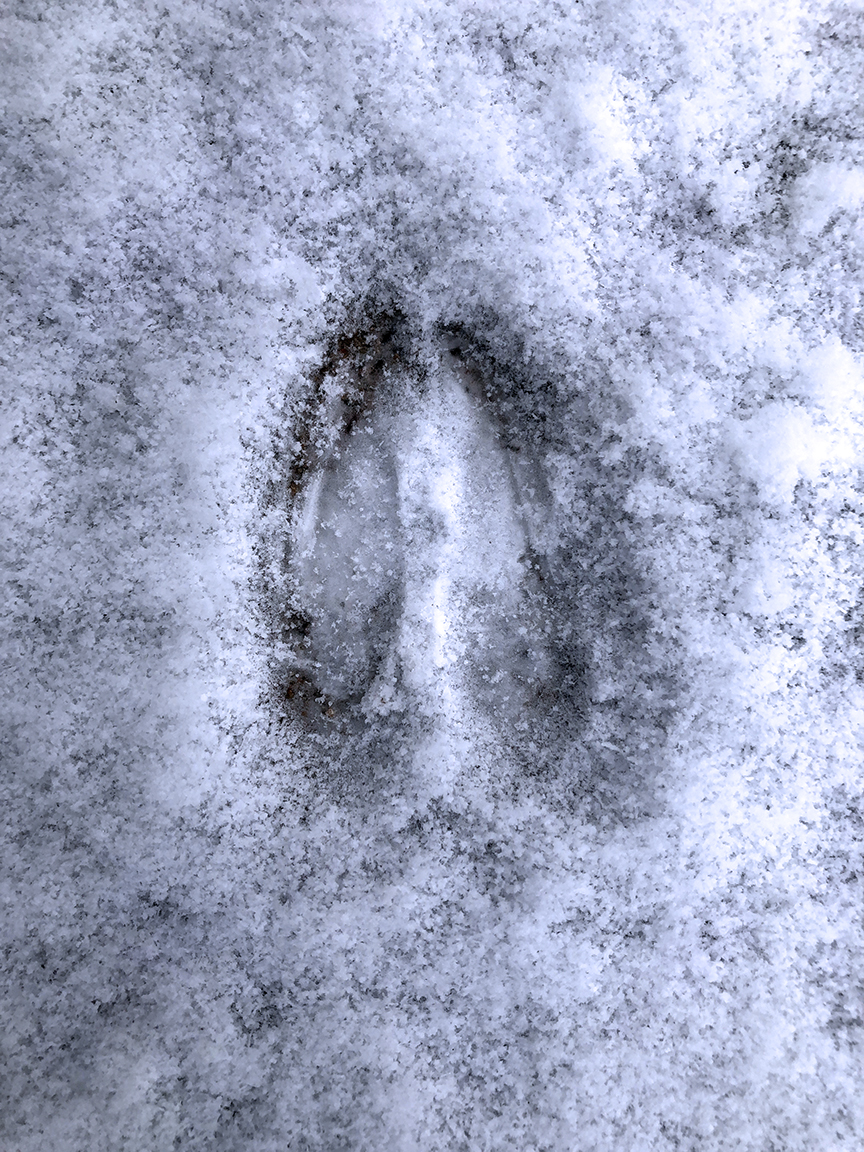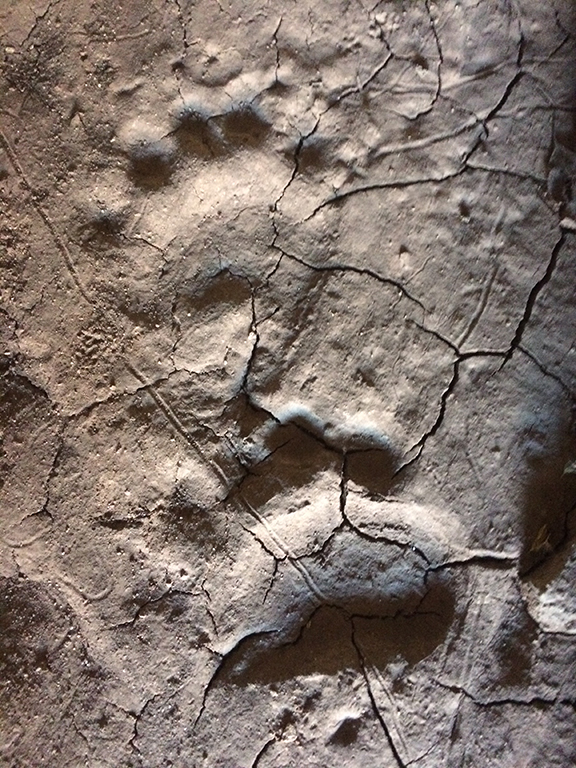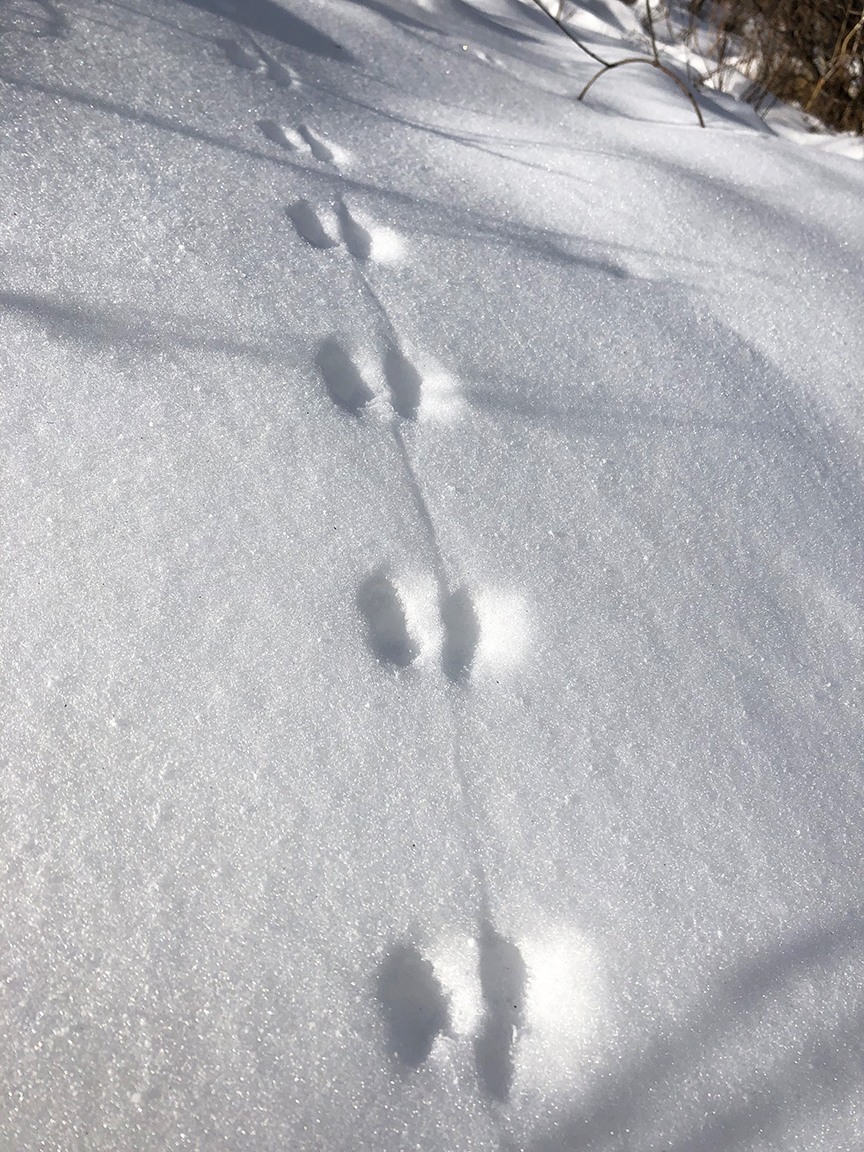The telltale tracks of winter
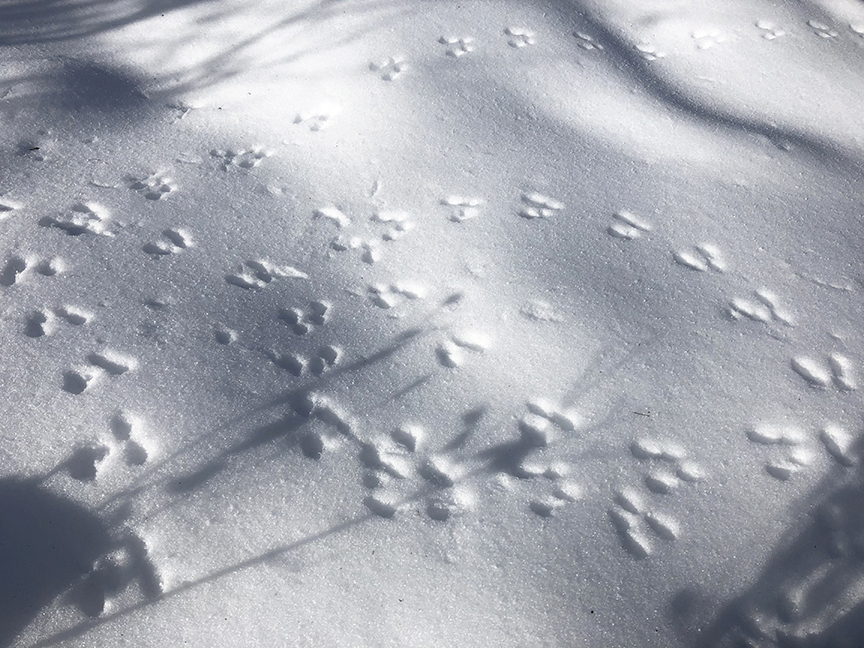
Anyone who has taken a summer hike in the woods without seeing so much as chipmunk might wonder if there are any animals out there at all. It’s wintertime that opens a window to the wanderings of wildlife. The signs of animals on the move are everywhere, making the snowy months the best time of the year to take stock of the creatures that surround us, even if we don’t see them.
Learning to identify the tracks of wild animals, or simply pausing to ponder what might have made a paw print in the snow, adds an element of wonder to outdoor explorations. Children are smart enough to indulge in their curiosity. An adult who does the same may discover there’s more to be gained from a snowshoe hike or cross-country ski outing than what can be measured with a fitness tracker.
And then you’ll be hunting up clues on the Internet, perusing tracking guides and learning that some animals land their back paws ahead of their front paws when they’re on the run (think rabbits and chipmunks), or that some animals land their rear paws or hoofs in the same spot where their front ones previously fell. Deer, for example, employ this maneuver to conserve energy in the snow. Animals that walk in this pattern are grouped in the category of “perfect steppers.” If you’re not careful, you’ll be stopping to take photos of animal tracks and taking measurements with your fingers for reference.
Deer, elk and moose are all ungulates that leave similar hoof prints but they differ in size, at least as adults. Coyote tracks are bigger than fox tracks, but they are unmistakably in the canine family and resemble the family dog’s tracks, which is to say they don’t look like the tracks of a mountain lion, bobcat or house cat.
Canine tracks are oval, with the front two toes lining up and forward-pointing claw marks that are typically visible. The back pad is concave at the bottom. Feline tracks are much rounder and since cats have retractable claws, they don’t typically show. The bottom pad has three lobes on the bottom edge. Take a look at a house cat’s print and imagine it being much bigger. That’s a mountain lion’s paw print.
Then there are the much more unique prints of raccoons with front feet that are different from the rear. The three, sharp points of a turkey track lack the back-pointing toe of a typical bird track, while the oh-so-familiar prints of a bear sort of resemble human footprints. Since bears hibernate, their tracks are not generally seen in deep winter.
Snowshoe hare versus rabbit track? Look for four toes on the feet of both, if the toes manage to register in the snow, but the hare’s big hind feet can measure 4.5 inches in length (or more, according to some sources) and nearly as much across. The prints of the hind feet are typically in front. If there is a fifth imprint in the snow, at the rear, it is the hare’s tail dinting the snow. A snowshoe hare can cover 10 feet in a single leap and change direction quickly to escape a predator. Nuttall’s cottontail, or mountain cottontail – the local variety of rabbit – leaves rear prints that are about 3.5 inches long and an inch wide. For both rabbits and hares, the rear prints land in front of a pair off offset prints left by the front feet.
Birds can leave intricate, artistic prints in the snow as they swoop in and take off. A series of sharp, knife-like slices in the snow are likely left by a bird’s wing.
Examining the tracks of an animal you’ve witnessed frequenting an area is a great way to confirm exactly what a species’ tracks look like. Engaging the help of an expert may be the next best thing. Naturalists at the Aspen Center for Environmental Studies lead snowshoe tours at Aspen Mountain, Snowmass and Ashcroft, providing their expertise in animal tracks as part of the experience. ACES’ Hallam Lake property in Aspen is also a great place to view animal tracks. Click here for more about ACES offerings.
In addition, various Pitkin County Open Space and Trails properties that are open in the winter months offer plenty of opportunities to discover animal tracks. Try the lower Hunter Creek Trail, Smuggler Mountain Open Space and groomed Nordic trails, including the Rio Grande Trail and North Star loop, to name a few.
– By Pitkin County Open Space and Trails
- Magpie
- Mountain lion print
- House cat
- Coyote or fox
- Turkey track
- What went on here?
- Mule deer
- Bear print
- Probably a mouse

